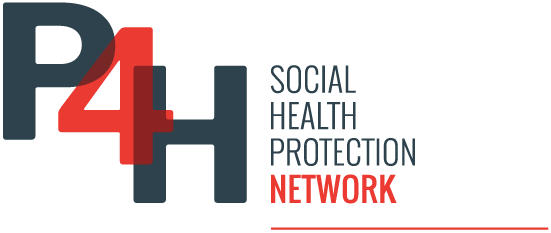The number of documents available on the P4H Network’s digital platform reflects the network’s scope of work. The majority of documents are primary source materials created by country nationals or resources produced by organizations working in social health protection (SHP) and/or health financing (HF).
Applying the strategic health purchasing progress tracking framework: Lessons from nine African countries
Strategic purchasing by deliberately directing health funds to priority populations, interventions, and services to ensure equity and efficiency can help countries reduce inequalities and out-of-pocket expenditures thereby improving social health protection. To help...
Toward Universal Coverage : Turkey’s Green Card Program for the Poor
This case study unravels Turkey's path to universal coverage. It outlines both the transformation of the health system and the performance of the 'Yesil Kart', the Green Card, program, a non-contributory health insurance scheme for the poor. As this study will show,...
How China controls the COVID-19 epidemic through public health expenditure and policy
This paper aimed to explore how the Chinese government controls the COVID-19 epidemic from the perspective of public health expenditure and policy. Findings showed that public health expenditure and policy played an important role in the governance and control of the...
Toward Universal Coverage : Turkey’s Green Card Program for the Poor
This case study unravels Turkey's path to universal coverage. It outlines both the transformation of the health system and the performance of the 'Yesil Kart', the Green Card, program, a non-contributory health insurance scheme for the poor. As this study will show,...
Financing social protection and accelerating coverage in times of crisis and beyond: options for a people-centred recovery
Financing social protection and accelerating coverage in times of crisis and beyond: options for a human-centred recovery
The political economy of health financing reforms in Zimbabwe: a scoping review
This study explores the interaction between the political and economic aspects of health financing reforms in Zimbabwe since its independence in 1980. Health financing reform often involves complex interactions among many stakeholders of varying positions, power, and...
Niger: CR of Meeting 2 TFP Health Financing Working Group
On April 29, 2022, the 2nd meeting of the Working Group of technical and financial partners in the health financing sector was held. The agenda was as follows: 1. Follow-up on action points 2. TOR and tools under review Finalization of the ToR for the cost and...
Equity of health financing in Indonesia: A 5-year financing incidence analysis (2015–2019)
In 2014, Indonesia launched a single payer national health insurance scheme or the JKN, expecting to cover the entire population by 2024. This study aims to assess the equity of the health financing system in Indonesia during 2015 – 2019 by analysing a secondary...
Health Financing Policy and Implementation in Fragile and Conflict-affected Setting: A Synthesis of Evidence and Recommendations
This paper is the product of a comprehensive review of both published and unpublished literature, and an extensive process of peer review and consultation. We extend our appreciation to the many comments we received on earlier versions of the paper at a number of...
A role for user charges? Thoughts from health financing reforms in Cambodia.
"The article examines how Cambodia has reformed its health financing system to ensure access without removing user fees."
Extending Social Health Protection in Lebanon
This study explores possibilities for strengthening the Lebanese health insurance model and extending social health protection to uncovered workers, including those in the informal economy. The situation assessment analyses the health system and the health financing...
Why Is Strategic Purchasing Critical for Universal Health Coverage in Sub-Saharan Africa?
Strategic purchasing is particularly important for countries in sub-Saharan Africa because public funding for health has often not kept pace with UHC commitments. This paper published in Health Systems and Reform underscores the importance of strategic purchasing in...
Health system performance in Iran: a systematic analysis for the Global Burden of Disease Study 2019
This study analyzed Iran’s national and subnational disease burden from 1990 to 2019 using data from the Global Burden of Disease Study 2019. Life expectancy increased to 79.6 years for women and 76.1 years for men, while the total DALYs remained relatively stable at...
Health insurance engagement in Sierra Leone: Project memo
The International Growth Center (IGC) Sierra Leone has been heavily involved in working with the Directorate of Policy, Planning and Information (DPPI) at the Ministry of Health and Sanitation in providing technical input into the design of the insurance programme as...
